MOVIE REVIEW – Anthony and Joe Russo are back with their signature “boys and toys” formula in this visually overloaded, emotionally barren odyssey through an alternate, retro-futuristic version of 1990s America. Following Cherry and The Gray Man, the Russo brothers continue their post-Avengers streak of cranking out high-budget, star-packed streaming content designed for quick consumption and quicker oblivion. In this nostalgia-tinted clash of man versus machine, you’ll spot names like Ke Huy Quan, Giancarlo Esposito, Stanley Tucci, and an all-star voice cast – but don’t expect to remember much afterward.
The Flaming Lips’ “Yoshimi Battles the Pink Robots, Pt. 1” is a dreamy, psychedelic pop anthem about a Japanese girl battling sentient robots threatening humanity. It leans into anime-style sci-fi surrealism that could easily be silly if not for Wayne Coyne’s haunting, melancholic delivery. That 2002 track is a solid – if glaringly obvious – pick for The Electric State’s end credits. But instead of elevating the film, it highlights what’s glaringly absent: charm, wit, and emotional authenticity.
A Blockbuster Facade Sprayed with Nostalgia
Adapted from Simon Stålenhag’s 2018 graphic novel, the screenplay by MCU stalwarts Christopher Markus and Stephen McFeely is functional but flat. The narrative becomes increasingly chaotic, packed with scenes that suffocate rather than excite. Like many Netflix originals, The Electric State feels more like a soulless imitation of cinema, desperately chasing the vibe of classic Amblin films with synthetic sentimentality.
The tone – a mash-up of adventure, comedy, and emotion – seems aimed at capturing that Guardians of the Galaxy magic, and Chris Pratt reinforces that comparison by playing, once again, the same quippy, rugged everyman we’ve seen from him since Jurassic World. Add in random blasts of classic rock – Tom Petty, The Clash, Judas Priest – alongside overplayed pop ballads like Don’t Stop Believing, Wonderwall, and I Will Survive, and the audio starts to feel like a Spotify algorithm wearing a leather jacket.
By the time the final showdown kicks off with “Ride of the Valkyries” blaring, I found myself daydreaming about better robot-centric sci-fi – like Brad Bird’s The Iron Giant, or even the charming goofiness of John Badham’s Short Circuit. Hell, I would’ve taken Rosie from The Jetsons at that point. Nostalgia should feel like a warm embrace. Here, it’s more like a reminder that this movie is borrowing better ideas from better places.
New World, Same Old Dystopia
The story begins in 1990, “Before the War,” introducing Michelle (Millie Bobby Brown) and her younger brother Christopher (Woody Norman), a precocious prodigy whose IQ already has him destined for college. When Chris’s favorite Saturday morning cartoon, Kid Cosmo, is abruptly canceled, it’s just one symptom of rising anti-robot sentiment brewing across the human population.
Robots, now self-aware and mass-produced for labor, begin demanding rights and refusing to follow President Clinton’s directive to return to work. Society panics.
Jump to 1994, “After the War.” Tech visionary Ethan Skate (Stanley Tucci) introduces the “neurocaster,” a VR headset with bifurcation functionality – meaning users can relax in virtual fantasy while their robot avatars do the dirty work in the decaying real world. It’s escapism at its most dystopian.
Vintage Vans, Black Market Plushies, and a Government on Their Tail
Orphaned after her parents’ fatal car crash, Michelle becomes a ward of the state under the care of Ted (Jason Alexander) – a repulsive slob who spends his days ogling Vegas showgirls via his neurocaster while his robotic double berates Michelle. She assumes Chris died in the same accident – until a robot with a yellow lollipop head and a grin straight out of Kid Cosmo shows up in her room (voiced by Alan Tudyk). She quickly connects the dots: it’s her brother’s mechanical twin. And that can only mean one thing – the real Chris is still out there.
Following the failed robot uprising, machines are dismantled and exiled to “Rest Areas” in the desert Exclusion Zone, a no-go region that also houses smuggled prewar artifacts. A shady vendor’s package leads Michelle and Cosmo to New Mexico in search of answers.
They soon meet Keats (Chris Pratt), a jaded smuggler, and his loudmouthed robot companion Herman (Anthony Mackie). Inside their warehouse lies a treasure trove of analog oddities: animatronic singing fish (Big Mouth Billy Bass), Cabbage Patch Kids, plush toys, and even outlawed snack foods like Spam. But before Keats can ditch the duo, Colonel Bradbury (Giancarlo Esposito) of the Robot Deactivation Task Force kicks in the door, guns blazing. They’re left with no choice but to flee together.
Nesting Robots and the Quest for a Human Soul
The motion capture work on the robots is competent and thoughtfully designed, with each droid sporting a distinct personality. Unfortunately, the cartoonish traits wear thin fast, and the overabundance of side characters becomes a symptom of the film’s exhausting “more is more” philosophy.
The Russos toss in new twists and flashy elements like confetti – not to serve the story, but to feed the spectacle. Case in point: the oversized Herman carrying a battered Volkswagen bus across the desert like a cybernetic Atlas. It’s not narrative logic – it’s just a cool image. And that’s a recurring problem.
The character glut only escalates with the arrival of Dr. Amherst (Ke Huy Quan), the hospital surgeon who misled Michelle about Chris’s fate, and the discovery of a hidden desert robot commune. Amherst hopes this enclave might restore the robots’ dignity and status as sentient beings. Among them: the down-home Mr. Peanut (Woody Harrelson), the cocky, baseball-slinging Popfly (Brian Cox), and the overly enthusiastic mailbot Penny Pal (Jenny Slate).
It’s no shock that the trail to the real Chris eventually leads back to Skate – a villain convinced he’s saving humanity, collateral damage be damned. And yes, he’s got the standard-issue tragic childhood, because apparently every antagonist needs a trauma starter pack these days. So when our ragtag band of rebels reaches his HQ, you already know what’s coming: Marvel-level mayhem on a green screen budget.
Forced Feelings and a Very Familiar Algorithm
The final act tries its best to hit emotional highs, with Alan Silvestri’s score working overtime to cue the tears. But the characters are so thinly drawn, it’s like asking the audience to cry over cardboard cutouts. The cast is game, but stuck on autopilot in a lifeless blend of live-action and animatronics. Even the talented voice cast – including Colman Domingo and Hank Azaria – is wasted in blink-and-miss roles.
And that grand message about stepping away from technology to reconnect with real human emotions? It’s so clichéd it might as well be printed on a coffee mug. Worse, it’s Netflix delivering that sermon – the same platform whose recommendation algorithm has more narrative control than most directors. Irony level: lethal.
-Herpai Gergely “BadSector”-
The Electric State
Direction - 2.8
Actors - 3.2
Story - 2.2
Visuals/Music/Sounds - 6.5
Ambiance - 1.2
3.2
BAD
Netflix’s latest sci-fi flick looks impressive on the surface, but beneath the shiny retro-futuristic shell lies a hollow attempt at adventure. Despite the efforts of its cast and voice talent, the emotional vacuum swallows everything. The Electric State is a glossy nostalgia machine with no beating heart.

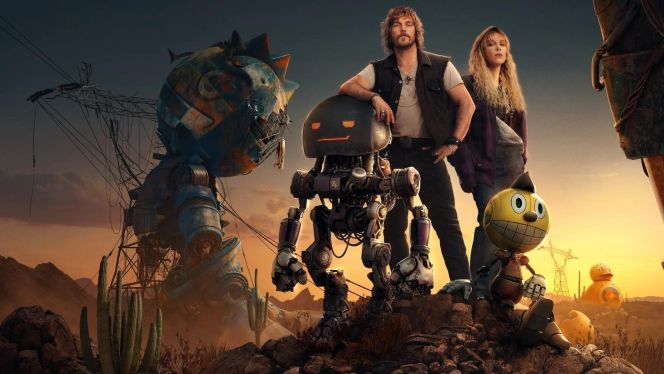
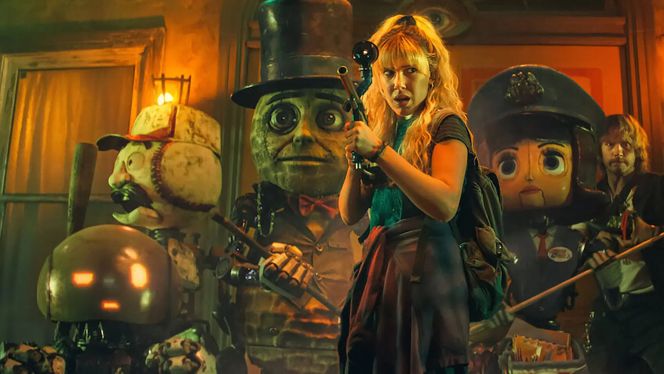
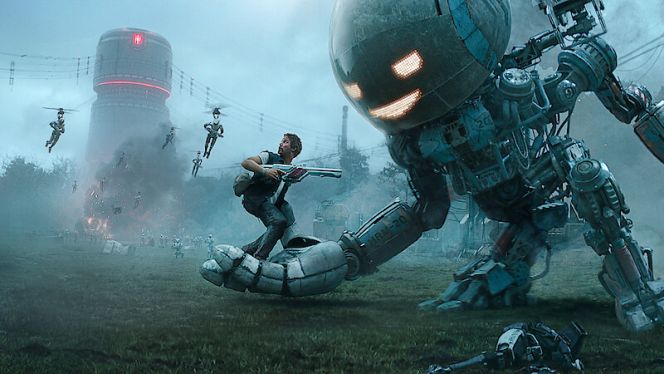
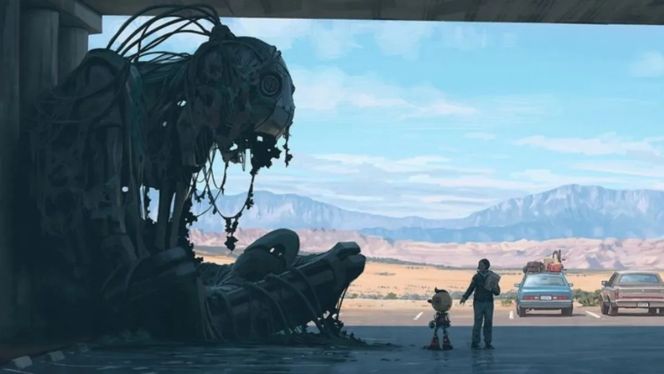
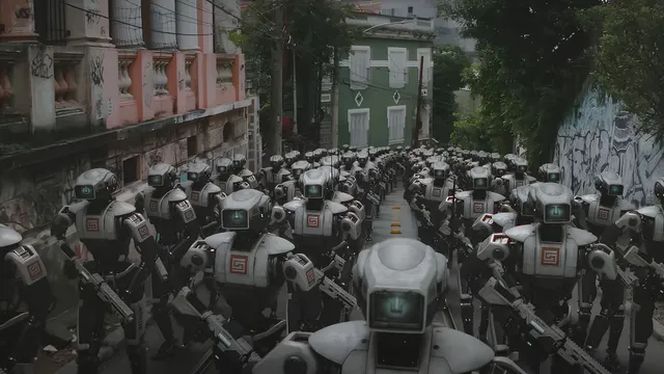

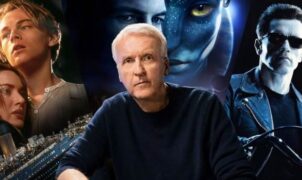






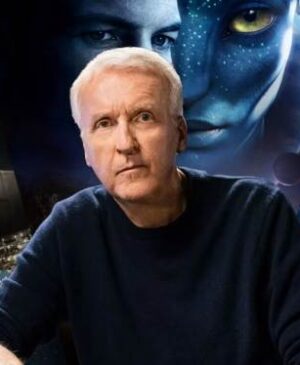


Leave a Reply